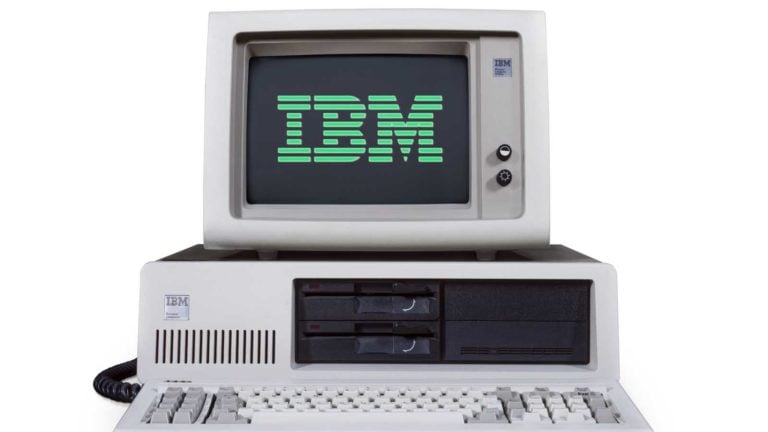Hello, Reader.
The ’80s are making a comeback.
Shoulder pads and parachute pants are back in style. Millennials and Gen-Zers capture their latest memories with disposable cameras. Even Pepsi’s new logo is reminiscent of the Reagan era.

We can probably pin these blasts on the past on what trend watchers and other armchair sociologists are calling “nowstalgia.” That’s the state of hyper-nostalgia that we seemed to enter in the wake of the pandemic.
More than ever, we’re all reminiscent of times gone by – even very recent times gone by, i.e., 2019 – and the internet makes it astoundingly easy to access it all.
Hence, retro products, trends, and ideas are back with full force (although, less hairspray).
And it seems big tech companies aren’t immune from the effects of “nowstalgia,” either.
Last week, International Business Machines Corp. (IBM) announced that it will be teaming up with Microsoft Corp. (MSFT) to release the latter’s 1988 source code MS-DOS 4.0 under the MIT license.
This is happening now, as Microsoft states, because “[we], along with our friends at IBM, think this is a fascinating piece of operating system history worth sharing.”
MS-DOS 4.0 is Microsoft’s operating system for x86-based personal computers. It supports multiple current screen images, which gives the user the illusion and use of many independent computers. The MIT license will permit users to copy, modify, publish, or distribute the licensed software.
Microsoft’s late-’80s operating system was so memory intensive at the time (92KB of RAM) – too much for PCs of the era – that many analysts believe it’s why Linux (an open-source operating system) became so popular over the following years.
So, as IBM works to bring the ’80s back – or at least, ’80s-era software – let’s take a current look at:
- The state of Big Blue
- Whether it’s a good “buy”
- And if this flashback strategy is useful elsewhere.
Then, as even as we’re setting our sights on the past, we’ll investigate where to look for profits in the very near future…
“Big Black and Blue”
IBM announced first-quarter earnings last Wednesday, April 24. The day after the report, its stock tumbled more than 10% during the first hour of trading – and it has struggled to recover since.
On the surface, IBM’s quarterly report did not seem so terrible. Revenues and earnings both topped analyst estimates. Additionally, the company did not revise revenue or cash-flow guidance for 2024.
But below the surface, IBM’s consulting division, which generates about 30% of revenues, reported no growth whatsoever.
The company blamed a soft IT-spending environment for the lackluster consulting results. That explanation is at least partly valid, as other tech companies have been reporting a similar softness.
On the other hand, IBM management has been touting its consulting division as the driving force behind its transformation into an AI leader in the enterprise market.
This quarterly result does not invalidate that claim, but it does raise concerns about how effectively IBM’s consulting division can deliver Big Blue’s AI solutions.
Often, the stock market overreacts to quarter-by-quarter corporate results, and it may be doing so once again with IBM’s results. But the soft consulting revenues are a serious and legitimate concern, since that division is critical to the company’s near-term growth prospects.
So, as cool as the 1988 DOS “nowstalgia” is, it alone won’t do the trick. “Big Blue” has become “Big Black and Blue,” and I recommend standing aside for now.
The Future Is Here
While I recommend leaving IBM behind in this current era of “nowstalgia,” there’s another ’80s trend making a resurgence: science fiction.
I’m talking about Elon Musk’s latest AI creation. Simply put, it’s a strange, sci-fi-like device that can be implanted in the human brain. You could even find yourself wearing it one day.
You see, earlier this year, Musk launched an unbelievable experiment, known as PRIME, to test this new type of AI. And the thing is… it worked.
I believe PRIME will change humanity as we know it… and make a lot of people wealthy in the process.
So, I recently recorded this video right outside Musk’s headquarters, and you won’t believe what I uncovered.
Click here to see for yourself.
Regards,
Eric Fry
Editor, Smart Money
P.S. Jonathan Rose is a 20-year market veteran who is providing live education and trading analysis every day the market is open.
His passion is bringing his understanding of what actually works on Wall Street to everyday investors. And that’s why he’s bringing you the Masters in Trading Summit on Wednesday, May 8, at 10 a.m. Eastern time.
It’s completely free to attend, and you won’t want to miss it because Jonathan is revealing the #1 indicator that helps market makers find trades that go up 90.3% of the time.

